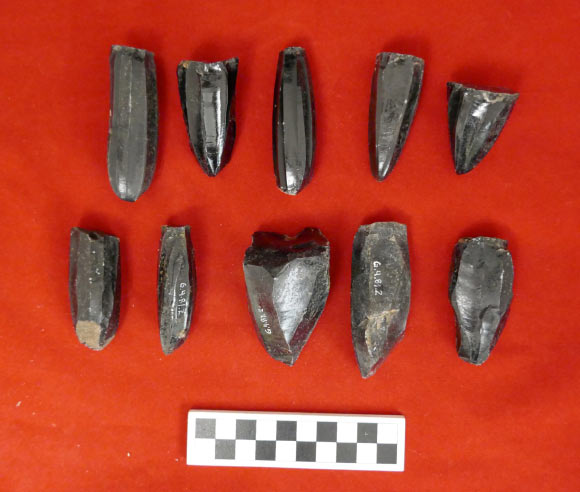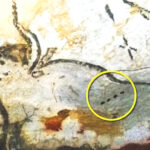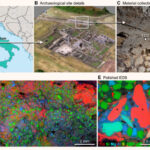According to a paper by Washington State University anthropologist Rachel Horowitz, the ruling Maya elite in the K’iche’ region of what is now Guatemala took a hands-off approach when it came to managing the procurement and trade of obsidian — a glasslike rock used to make tools and weapons — by people outside the region of central control; in these areas, access to nearby sources of obsidian was managed by local people through independent and diverse acquisition networks.
Obsidian tools from the Maya site of Q’umarkaj and the surrounding region in Guatemala. Image credit: R. Horowitz.
“Scholars have generally assumed that the obsidian trade was managed by Maya rulers, but our research shows that this wasn’t the case at least in this area,” said Dr. Horowitz, a researcher in the Department of Anthropology at Washington State University.
“People seem to have had a good deal of economic freedom including being able to go to places similar to the supermarkets we have today to buy and sell goods from craftsmen.”
While there are extensive written records from the Maya Postclassic period (1200-1524 CE) on political organization, much less is known about how societal elites wielded economic power.
Dr. Horowitz set out to address this knowledge gap for the K’iche’ Maya by examining the production and distribution of obsidian artifacts, which are used as a proxy by archeologists to determine the level of economic development in a region.
She performed geochemical and technological analysis on obsidian artifacts excavated from 50 sites around the K’iche’ capital of Q’umarkaj and surrounding region to determine where the raw material originally came from and techniques of its manufacture.
The results showed that the K’iche’ Maya acquired their obsidian from similar sources in the Central K’iche’ region and Q’umarkaj, indicating a high degree of centralized control.
The ruling elite also seemed to manage the trade of more valuable forms of nonlocal obsidian, particularly Pachua obsidian from Mexico, based off its abundance in these central sites.
Outside this core region though, in areas conquered by the K’iche’, there was less similarity in obsidian economic networks.
The analysis suggests these sites had access to their own sources of obsidian and developed specialized places where people could go to buy blades and other useful implements made from the rock by experts.
“For a long time, there has been this idea that people in the past didn’t have market economies, which when you think about it is kind of weird. Why wouldn’t these people have had markets in the past?” Dr. Horowitz said.
“The more we look into it, the more we realize there were a lot of different ways in which these peoples’ lives were similar to ours.”
The paper was published in December 2022 in the journal Latin American Antiquity.
_____
Rachel A. Horowitz. Economic Integration and Obsidian Consumption in the Late Postclassic Period K’iche’ Region. Latin American Antiquity, published online December 9, 2022; doi: 10.1017/laq.2022.79




